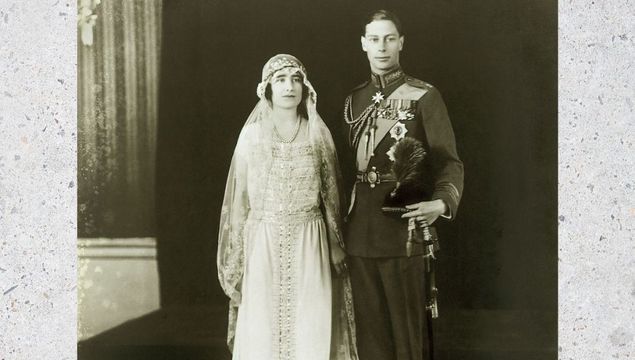
Prince Albert, Duke of York (future George VI) and Elizabeth Bowes-Lyon at ther wedding. Prince Albert is wearing the full dress uniform of the Royal Air Force with the rank of group captain.Royal Collection / CC
On April 26, 1923, The Duke of York and Elizabeth Bowes-Lyon, later King George VI and Queen Elizabeth, were married in Westminster Abbey, London.
Queen Elizabeth II's father started out in life as Prince Albert, Duke of York, or "Bertie" as he was known by his family. The second son of King George V he was made King George VI in May 1937 and served until his death in Feb 1952. However many moons before he met Lady Elizabeth Bowes-Lyon in 1921, the woman who would become Queen Elizabeth, the Queen Mother.
The proposal
Prince Albert initially proposed to Lady Elizabeth Bowes-Lyon in 1921, but she turned him down, being "afraid never, never again to be free to think, speak and act as I feel I really ought to".
Read more
It was only when the Prince said he would refuse to marry anyone else that his mother, Queen Mary intervened. She visited Lady Elizabeth at her childhood home, Glamis Castle, in Angus, Scotland to see what her son saw in her. Thankfully she became convinced that Lady Elizabeth was the one for Prince Albert but she did not intervene.
Lady Elizabeth was courting James Stuart, Albert's equerry until he left the prince's service for a better-paid job in the American oil business.
In Feb 1922 Lady Elizabeth was a bridesmaid for his sister, Princess Mary who married Viscount Lascelles. A month later Prince Albert proposed again and Elizabeth refused him.
Eventually, in Jan 1923, Lady Elizabeth agreed to marry Prince Albert. However, she still had misgivings about royal life.
The Royal Wedding
Here is some incredible British Pathé footage of the event:
The couple was married on April 26, 1923, at Westminister Abby, in London.
The couple's wedding rings were crafted from 22-carat Welsh gold, from the Clogau St David's mine, in Bontddu. In the following years, the use of Clogau Gold in the Royal Family's wedding became a tradition.
In an unexpected and unprecedented gesture, Lady Elizabeth laid her bouquet at the Tomb of The Unknown Warrior on her way into the Abbey, in memory of her brother Fergus. This touching moment also sparked a Royal tradition and subsequent Royal brides also place flowers at the tomb, though nowadays it's done after the ceremony.
The fashion!
Lady Elizabeth was attended by eight bridesmaids... only fitting for the new Queen. Her dress was made from deep ivory chiffon moire, embroidered with pearls and a silver thread. The dress was in the fashion of the early 1920s, designed by Madame Handley-Seymour, dressmaker to Queen Mary. Elizabeth chose not to wear a tiara, and instead wore a chaplet of leaves secured the veil.
Prince Albert wore Royal Air Force full dress in the rank of group captain, his senior service rank at the time of his marriage.
Controversy
Prince Albert's freedom in choosing Elizabeth, not a member of a royal family, caused quite a stir. Although though the daughter of a peer Lady Elizabeth was not a princess. This to allow Prince Albert to marry outside the Royal line was considered a gesture in favour of political modernisation.
There was a hubbub surrounding whether the Royal Wedding should have been broadcast to the nation on the wireless (radio) by the newly formed British Broadcasting Company. While the Dean of Westminister Abbey, Herbert Edward Ryle, was in favor, it was eventually vetoed.
The Archbishop of Canterbury raised his concerns "that men might listen to it in public houses".
How times have changed!





Comments